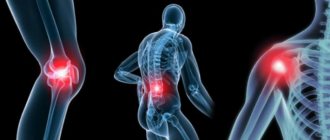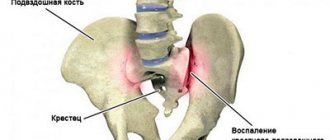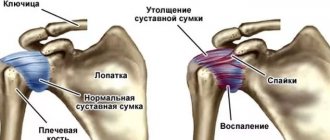The text is presented for informational purposes only. We strongly urge you not to self-medicate. When the first symptoms appear, consult a doctor. We recommend reading: “Why you can’t self-medicate?” Autoimmune diseases are the most complex and difficult to treat diseases caused by malfunctions of the immune system. They occur when the immune system attacks healthy cells in the body.
general characteristics
The human immune system is a complex of tissues, organs and cells. Its task is to protect the body from pathogens in the form of infections, bacteria, fungi and foreign bodies. But sometimes the system of recognizing “friends” and “strangers” fails. Then the immune system perceives healthy cells of the body as enemies and begins to attack them with the help of autoantibodies, in other words, it produces antibodies against “its own” cells.
Content:
- general characteristics
- Types of autoimmune diseases
- Risk factors for autoimmune diseases
- Diagnostic methods
- Traditional and modern treatments
Today, experts do not have enough knowledge to say exactly why autoimmune diseases occur. In addition, they are quite difficult to diagnose and treat. However, autoimmune diseases are very common. According to preliminary estimates by American experts, in the United States alone there are about 24 million people suffering from at least one disease from this group. These diseases can be localized to one organ or tissue, or systemic - affecting different parts of the body. However, even localized diseases often cause complications, affecting other organs. Interestingly, almost a quarter of people with autoimmune diseases are prone to developing other diseases from this group. If a patient has three or more autoimmune processes, they indicate the development of multiple autoimmune syndrome (MAS). But so far it is difficult for specialists to say why some people develop MAS.
Literature
- Immunity: fight against strangers and... one's own;
- Systemic lupus erythematosus: a disease with a thousand faces;
- Rheumatoid arthritis: change the composition of the joints;
- Nasonov E.L., Alexandrova E.N., Novikov A.A. (2015). Autoimmune rheumatic diseases - problems of immunopathology and personalized therapy. Bulletin of the Russian Academy of Medical Sciences. 2, 169–182;
- Babaeva A.R., Kalinina E.V., Zvonorenko M.S. (2016). New opportunities to improve the effectiveness and safety of treatment of rheumatoid arthritis. Medical alphabet. 22, 5–12;
- Josef S Smolen, Robert Landewé, Ferdinand C Breedveld, Maya Buch, Gerd Burmester, et. al.. (2014). EULAR recommendations for the management of rheumatoid arthritis with synthetic and biological disease-modifying antirheumatic drugs: 2013 update. Ann Rheum Dis
.
73 , 492-509; - Nasonov E.L. (2015). Methotrexate for rheumatoid arthritis - 2015: new facts and ideas. Scientific and practical rheumatology. 4, 421–433;
- Kanevskaya M.Z. and Gurskaya S.V. (2013). Methotrexate in the treatment of rheumatic diseases. Modern rheumatology. 4, 47–53;
- D. T. Felson, J. S. Smolen, G. Wells, B. Zhang, L. H. D. van Tuyl, et. al.. (2011). American College of Rheumatology/European League Against Rheumatism Provisional Definition of Remission in Rheumatoid Arthritis for Clinical Trials. Annals of the Rheumatic Diseases
.
70 , 404-413; - Patrick Durez, Jacques Malghem, Adrien Nzeusseu Toukap, Geneviève Depresseux, Bernard R. Lauwerys, et. al.. (2007). Treatment of early rheumatoid arthritis: A randomized magnetic resonance imaging study comparing the effects of methotrexate alone, methotrexate in combination with infliximab, and methotrexate in combination with intravenous pulse methylprednisolone. Arthritis Rheum
.
56 , 3919-3927; - Monoclonal antibodies;
- 12 methods in pictures: immunological technologies;
- Autophagy, protophagy and others;
- Nobel Prize in Medicine or Physiology 2021: for self-criticism;
- Zaichik A.M., Poletaev A.B., Churilov L.P. (2013). Recognition of “One’s own” and interaction with “One’s own” as the main form of activity of the adaptive immune system. Bulletin of St. Petersburg State University. Episode 11. Medicine. 1;
- Autoimmunity. Modern views on the physiological and pathological aspects of autoimmunity. NSU Electronic Archive;
- For the first time in half a century, there is a new drug for lupus;
- Nasonov E.L. and Karateev D.E. (2013). The use of genetically engineered biological drugs for the treatment of rheumatoid arthritis: general characteristics (lecture). Scientific and practical rheumatology. 2, 163–169;
- Logvinenko S.I., Shcherban E.A., Pridachina L.S., Pridachina A.N., Maslova Yu.Yu., Kashichkina A.A. (2016). Genetic engineering in the treatment of ankylosing spondylitis (Bechterew's disease). Scientific bulletins of BelSU. Series: Medicine. Pharmacy. 19, 179–182;
- Masahiko Mihara, Misato Hashizume, Hiroto Yoshida, Miho Suzuki, Masashi Shiina. (2012). IL-6/IL-6 receptor system and its role in physiological and pathological conditions. Clin.
Sci. .
122 , 143-159; - Nasonov E.L., Alexandrova E.N., Avdeeva A.S., Panasyuk E.Yu. (2013). Inhibition of interleukin 6 - new possibilities for pharmacotherapy of immunoinflammatory rheumatic diseases. Scientific and practical rheumatology. 4, 416–427;
- Suponitskaya E.V., Alexandrova E.N., Aleksankin A.P., Nasonov E.L. (2015). The effect of therapy with genetically engineered biological drugs on B-lymphocyte subpopulations in rheumatic diseases: new data. Scientific and practical rheumatology. 1, 78–83;
- Babaeva A.R., Cherevkova E.V., Galchenko O.E., Solodenkova K.S. (2012). Biological agents in the basic therapy of rheumatoid arthritis. Medicinal Bulletin. 7, 3–9;
- Muravyov Yu.V. and Muravyova L.A. (2016). Untimely thoughts on the use of genetically engineered biological drugs for rheumatic diseases. Scientific and practical rheumatology. 3, 361–366;
- Psoriasis: at war with your own skin.
Types of autoimmune diseases
There are several types of autoimmune diseases that can affect different organs and systems of the body. Today, experts know about almost 80 types of autoimmune diseases. Some of them, such as autoimmune thyroiditis (Hashimoto's thyroiditis), are diagnosed quite often, while others are less common. Below we consider the most famous autoimmune diseases.
Systemic (affect several organs at once)
- Systemic lupus erythematosus. It is a chronic autoinflammatory disease that occurs more often in women. The main triggers for exacerbation of the disease: ultraviolet radiation, viral infections, stress. Against the background of the disease, problems arise with the skin, joints, kidneys, heart, brain, and the process of hematopoiesis is also disrupted.
- Acquired autoimmune disorders caused by the human immunodeficiency virus. HIV infection causes total destruction of the immune system, which leads to damage to most systems, organs and tissues of the body.
Other common types of systemic autoimmune diseases:
- dermatomyositis - affects the skin and muscles;
- rheumatoid arthritis – joints, lungs, skin, eyes suffer;
- scleroderma - damage to the skin, intestines, lungs, kidneys;
- Sjogren's syndrome - affects the salivary and lacrimal glands, joints.
Affecting the apparatus of the eye
Acute anterior uveitis. This is the most common inflammatory disease of the iris. It is usually associated with the presence of the HLA-B27 antigen in the body.- Sjögren's syndrome. This is a disease in which the immune system attacks the exocrine glands (responsible for the production of tears and saliva).
Affecting the gastrointestinal tract
- Autoimmune hepatitis. Affects liver cells. Autoimmune hepatitis occurs in 1-2 people out of 100 thousand, and in women much more often than in men (out of 10 patients, 7 are women). Scientists have proven a genetic predisposition to this disease.
- Celiac disease. A condition in which the intestines react inappropriately to foods containing gluten. In this disorder, the lining of the small intestine becomes inflamed every time after eating food containing a specific protein.
- Inflammatory bowel disease. This is a general name for several diseases that cause chronic inflammation in the digestive tract. The most common diseases from this group are Crohn's disease and ulcerative colitis.
- Primary biliary cirrhosis. In this disorder, the immune system slowly destroys the bile ducts of the liver.
Affecting hematopoiesis and blood vessels
- Polyarteritis nodosa. A serious disease in which small and medium-sized arteries become inflamed and damaged. The risk of developing the disease increases against the background of hepatitis B and C.
- Antiphospholipid antibody syndrome. Leads to damage to blood vessels.
- Hemolytic anemia. This type of anemia occurs when immune cells attack blood cells.
- Idiopathic thrombocytopenic purpura. Causes platelet destruction.
Skin damage
- Scleroderma. This autoimmune disorder affects the connective tissues of the skin and blood vessels, as well as muscles and internal organs. The disease is more often diagnosed in women aged 30 to 50 years.
- Dermatomyositis. This condition results in muscle inflammation and is accompanied by a skin rash. Often appears in people with malignant tumors in the lungs or abdominal cavity.
- Psoriasis. A common autoimmune disease that causes scaly, dry, itchy patches on the skin. The disease is often accompanied by joint pain. The main triggers of the disease: stress, poor environment, infectious diseases.
- Vitiligo. In this condition, the cells containing skin pigment are destroyed, causing white spots to appear on the body. It most often affects people with dark skin.
- Alopecia areata. It develops when the immune system attacks hair follicles.
Hormone dependent
Diabetes mellitus type 1. This disease occurs because autoantibodies attack the cells of the pancreas that are responsible for producing insulin. The result is a lack of insulin, which causes glucose levels in the blood and urine to rise.- Autoimmune pancreatitis and hepatitis. This is an inflammation of the pancreas and liver caused by the pathogenic activity of immune cells.
- 21-hydroxylase deficiency. This disease affects the adrenal glands and leads to excessive production of the male sex hormones androgens.
- Autoimmune thyroiditis. During this disorder, the cells of the thyroid gland are destroyed, which leads to its insufficient activity. This disease can appear at any age, but is more common among middle-aged women.
- Basedow's disease (hyperthyroidism, Graves' disease). This autoimmune disorder causes an overactive thyroid gland.
Affecting the nervous system
- Multiple sclerosis. During the course of the disease, the brain cells and nervous system come under attack from the immune system. Autoimmune cells damage myelin sheaths, which serve as a protective covering for nerve cells.
- Myasthenia. In this disorder, the immune system attacks nerve endings and muscles, resulting in severe weakness.
Arthritis
- Ankylosing spondylitis (ankylosing spondylitis). This is a common form of chronic arthritis caused by an autoimmune disorder. The disease damages the joints of the spine and pelvis (sacroiliac joints) and paravertebral soft tissues. Progression of the disease leads to severe pain, skeletal deformation and disability.
- Reiter's syndrome. This is an inflammation that affects the joints, which often develops as a complication of certain infectious diseases (nasopharyngeal, genitourinary, intestinal). The disease, as a rule, affects large joints (knees and lower back), but at the same time it causes inflammation of the eyes (conjunctivitis, uveitis), in men - urethritis (inflammation of the urethra), in women - cervicitis (inflammation of the cervix).
- Rheumatoid arthritis. This is one of the most common autoimmune diseases. As a result of this disease, joint tissues suffer. The disease leads to inflammation and serious damage to cartilage tissue. As the disease progresses, the lungs, pleura, sclera of the eyes may be damaged, or pericarditis may begin.
Surgery
Experts resort to surgical intervention for arthritis only when all methods of conservative therapy have been tried. During surgical intervention, the use of two techniques is of greatest importance:
- synovectomy – removal of the articular synovial membrane;
- complete joint replacement with an endoprosthesis.
The decision to replace a joint is made by an orthopedist together with a rheumatologist. The operation is performed when the joint is very deformed and has lost its ability to move. And the most important thing is the patient’s desire to undergo surgery. In this case, the postoperative period is much more successful. An artificial prosthesis can last from 5 to 15 years. The patient needs to take care of the new joint and limit its mobility.
Chronic disease of joint tissues, which subsequently affects cartilage and bone structures, is a very serious illness. In the absence of proper therapy, it constantly progresses and leads to disability. Only comprehensive treatment and patient compliance with all doctor’s recommendations leads to remission.
Don't delay your visit to the doctor. Self-medication, as well as unauthorized withdrawal of medications, is unacceptable for this disease. They will result in deterioration of health and progression of the disease.
You can make an appointment at the Canon clinic on the website or by phone +7
Risk factors for autoimmune diseases
Autoimmune disorders can affect almost anyone. But researchers do acknowledge that some groups of people have a higher risk of getting the disease.
Main risk factors:
- Genetics. Research shows that children whose parents have autoimmune disorders are also at increased risk of developing the disease. For example, multiple sclerosis and lupus are often inherited.
- Floor. Women are generally more susceptible to autoimmune disorders. It may be due to hormones or the fact that women tend to have stronger immune systems than men. In addition, scientists have found that women of childbearing age are more likely to get sick.
- Age. Most often, diseases of this group occur in young and middle age.
- Ethnicity. American experts have found that autoimmune disorders are much more common among Native Americans, Hispanics and blacks than among Europeans and Asians. If we talk about statistics by type of disease, type 1 diabetes is more common in white people, and lupus erythematosus, for example, in representatives of the black race and indigenous people of Spanish-speaking countries (23 countries in Latin America, Africa and the Pacific). Scientists explain the influence of this factor by the presence of common genes among representatives of the same ethnic group, as well as the influence of the environment in which they live, including solar activity.
- Infection. If a person with a genetic predisposition has suffered from specific viral or bacterial infections, the risk that they may develop an autoimmune disease in the future increases even more.
Diet for arthritis
It is very important to observe limited nutrition in case of autoimmune disorders, not only during exacerbation of the disease, but also during remission. Dietary nutrition involves excluding fatty and fried meat and fish products, strong broths, canned food and semi-finished products from the diet. It is necessary to reduce the consumption of salt and sugar. It is not advisable to eat corn, whole dairy products, wheat porridge and rye bread. Dishes consisting of products of plant origin, lean sea and river fish, lean poultry, rabbit and calf are useful for arthritis. For drinking, use infusions of rose hips and herbs, fruit drinks from berries, green tea, and mild mineral water without carbonation.
Diagnostic methods
Because many autoimmune diseases have similar symptoms, diagnosing them is often challenging. For example, lupus affects the joints in the same way as rheumatoid arthritis, although the symptoms are less severe. Lyme disease also causes joint stiffness and inflammation, as in RA, although this disease is not an autoimmune disease (its causative agent is a bacterium carried by ticks). Inflammatory bowel disease often has symptoms similar to celiac disease. The only difference is that in the first case, it is not gluten that causes digestive problems. It is much easier to identify thyroid diseases. Typically, to make a diagnosis, it is enough to analyze the level of hormones produced by the gland and do some other specific tests.
Diagnosing autoimmune diseases in each specific case may require its own methods. For example, to make a diagnosis, a patient with rheumatoid arthritis will have to undergo a physical examination, blood tests and x-rays. These tests will help determine the type of arthritis and its severity.
The main test for determining any autoimmune disease is testing for the presence of a specific autoantibody. A complete blood count is also important, because when the immune system is fighting something, the number of red and white blood cells always deviates from the norm. A blood test for erythrocyte sedimentation rate and C-reactive protein will help determine the presence of an inflammatory process in the body, which accompanies all types of autoimmune disorders.
The most dangerous thing is that it can sometimes take years for a patient with autoimmune disorders to receive an accurate diagnosis, since in the early stages many diseases are similar to each other.
Physiotherapy
Physiotherapy is an integral part of complex treatment for arthritis (ICD-10 code M05–M99) of the joints. Some of them are used during the acute period of the disease. Procedures that are done for inflamed joints:
- electrophoresis with glucocorticoids;
- ultraviolet radiation.
They relieve inflammation and pain.
At other stages of the disease the following is prescribed:
- magnetic therapy;
- laser irradiation;
- phototherapy using lamps;
- massage and self-massage;
- mud baths;
- hydrotherapy.
Therapeutic gymnastics is very important for damaged joints. It helps improve their mobility and prevents the formation of adhesions. The patient should perform exercises daily from the very beginning of the diagnosis, excluding the time of exacerbation of the disease. In addition, patients with autoimmune arthritis should receive an annual course of sanatorium-resort treatment, and the use of essential medications is not canceled.
Detection of response to phospholipids
When the level of antibodies to a component that is part of the cell membrane is exceeded, vascular interstitial damage is determined. A positive result indicates that antiphospholipid syndrome may be developing. Children with this disease experience anemia and mental retardation. A complication of the syndrome is impaired blood clotting, resulting in blood clots. Thrombosis is the cause of strokes and heart attacks. An increased index of immunoglobulins igM and igG provokes complications during pregnancy, a high risk of miscarriage, and premature delivery.
Determination of the yeast component
Testing in the process of diagnosing autoimmune diseases is prescribed when there is discomfort in the epigastric region, pain in the abdomen. A person's level of antibodies to Saccharomyces present in baker's yeast is checked if there is a suspicion of developing ulcerative colitis or Crohn's disease. To ensure the accuracy of the examination, a biopsy is performed. In vitro tests for autoimmune diseases help the doctor determine the type of disease, the degree of damage to internal organs, and also monitor the effectiveness of treatment measures.









